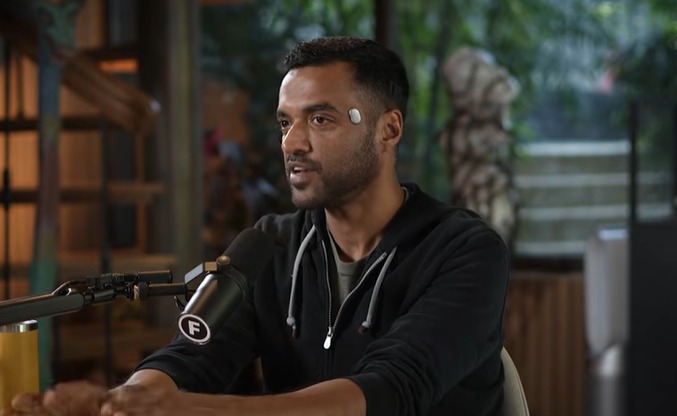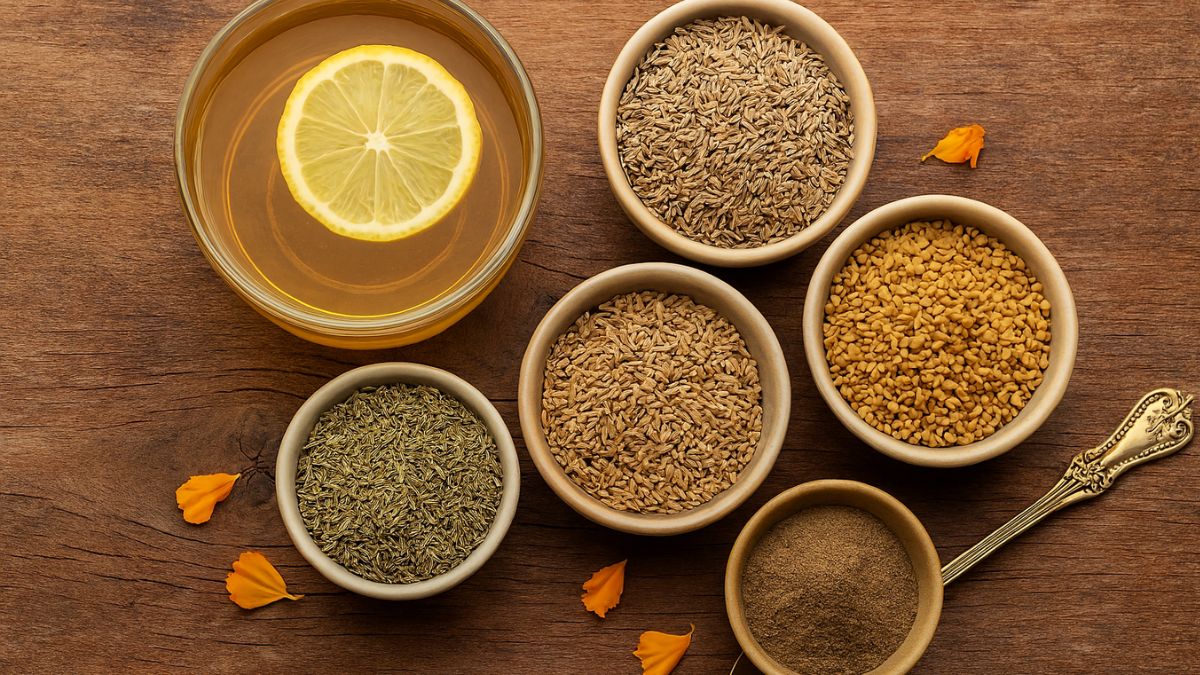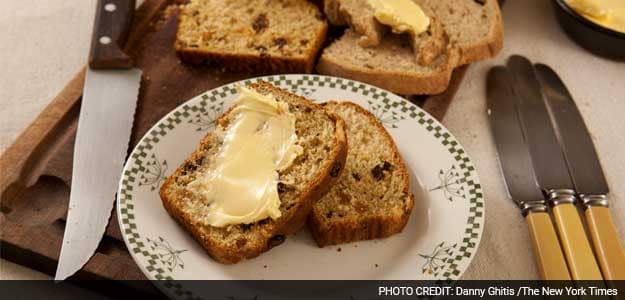I recently happened upon a mention of an old Irish custom of celebrating New Years Day as the Day of the Buttered Bread. What a marvelous idea, I thought. Good bread and good butter are two of the best things to eat in Ireland, no matter what the calendar date. But I had never heard it mentioned there. An entire day of feasting on bread and butter seemed delightfully decadent, but it was difficult to find many details of the practice.I contacted Darina Allen, proprietor of the renowned Ballymaloe Cookery School in Shanagarry, Ireland, who put me in touch with Regina Sexton, a food and culinary historian at University College Cork. My main question was whether or not this custom existed in modern Ireland.According to Sexton, the custom its difficult to speak with confidence of how widespread it was has long since died out. She reckons it was popular well into the 19th century and lingered on into the 20th century, perhaps as late as the 1930s or 40s.
She said her mother and grandmother sometimes spoke of it as a distant memory. (But a friend from Dublin told me there is at least one place in Ireland, the remote island of Inis Meain, or Inishmaan, where children still go house to house on New Years Day delivering slices of bread in exchange for pennies.)There is some controversy among scholars about translating La na gCeapairi, the old Gaelic term for the custom. Some say gCeapaire refers to buttered bread; others contend it simply means plain bread or cake. (In modern usage, the word means sandwich.)Sexton suggested that a good way to translate it would be -the day of the bread with butter upon it,- a fine distinction, highlighting the fact that bread was sustenance. Butter on bread was a luxurious thing, meant for company and celebrations. The menace of hunger and poverty throughout much of Irelands past was still palpable.Here are some of the ways the custom may have been observed, with butter or without: Slices of buttered bread could be displayed outside the house, perhaps offered to passers-by. A loaf of bread may be thrown out the door, then brought back inside.Or a loaf of bread or Christmas cake could be ritually bashed against the door of the house or banged against the walls (or both). Or crumbs could be thrown at the windows. A prayer invoking the Holy Trinity could be recited, and three ritual bites of bread could be eaten by the father of the household.Performed in whatever fashion, the custom was a symbolic way of banishing hunger, meant to augur plenitude. It also seems a perfectly delicious way to embark upon the new year, one worth reviving.Recipe: Irish Brown Soda Bread
Time: About 1 hour
Yield: 1 loafIngredients:
1 3/4 cups/288 grams whole wheat flour
1 3/4 cups/224 grams all-purpose flour, more as needed
1 teaspoon salt
1 teaspoon baking soda
2 tablespoons/28 grams unsalted butter
Softened 1 egg
1 2/3 cups/500 milliliters buttermilkPreparation:
1. Heat oven to 425 degrees. In a large mixing bowl, sift together the whole wheat flour, all-purpose flour, salt and baking soda. Use your fingertips to work the butter into the flour mixture.\2. In a small bowl, beat the egg and buttermilk together. Add the egg mixture to the flour mixture and stir to combine with a wooden spoon. Dough should be soft but not sticky; add a bit more all-purpose flour if necessary.3. Put dough on a lightly floured board and knead together gently, just enough to form a round loaf. Place on a parchment-lined baking sheet and cut a deep cross on top.4. Bake for 15 minutes, then turn heat to 400 degrees and bake for 30 minutes more, until nicely browned. To tell whether it's done, thump the bottom of the loaf with your fingertips; it should sound hollow. Remove from baking sheet and cool on a rack. Let cool to room temperature before slicing, if possible.Recipe: Barmbrack (Irish Sweet Bread)
Time: 2 hours
Yield: 1 loafIngredients:
1 teaspoon dry active yeast
2/3 cup/158 milliliters lightly warmed milk
1 egg, beaten
1 2/3 cups/214 grams all-purpose flour, plus flour for dusting
1/4 teaspoon cinnamon
1/4 teaspoon clove
1/4 teaspoon mace
1/2 teaspoon salt
2 tablespoons/28 grams unsalted butter, softened, more for greasing pan
1/4 cup/50 grams granulated sugar
1/2 cup/75 grams golden raisins
1/2 cup/75 grams black raisins
1/2 cup/75 grams currants
1 teaspoon grated lemon zest
1 teaspoon grated orange zestPreparation:
1. In a small bowl, whisk the yeast and milk together. Leave it to bubble slowly in a warm spot 10 minutes, then whisk in the beaten egg.2. In a large mixing bowl or the bowl of a stand mixer, put the flour, cinnamon, clove, mace, salt, butter and sugar. Mix well, incorporating butter with fingertips (or paddle, if using mixer) until absorbed.3. Pour the yeast-milk-egg mixture into the flour mixture and stir with a wooden spoon (or dough hook, with mixer).4. When the dough begins to come together, add the raisins, currants, lemon zest and orange zest, then mix to combine. It will be somewhat sticky dough. Dust lightly with flour, turn out onto a floured surface and knead for a few minutes until the dough feels smooth. Pat dough into a rectangle.5. Butter a loaf pan and lay in the dough, pushing down so dough covers bottom of pan. Stretch plastic wrap loosely over pan and put in a warm place, covered with a kitchen towel, for about an hour, until doubled in size. Uncover.6. Heat oven to 350 degrees and center a rack in the oven. Bake loaf on the centered rack for 45 minutes, until well browned. Carefully tip the loaf out of the pan onto a cooling rack. To tell whether it's done, thump the bottom of the loaf with your fingertips; it should sound hollow. Let cool to room temperature before slicing, if possible.
She said her mother and grandmother sometimes spoke of it as a distant memory. (But a friend from Dublin told me there is at least one place in Ireland, the remote island of Inis Meain, or Inishmaan, where children still go house to house on New Years Day delivering slices of bread in exchange for pennies.)There is some controversy among scholars about translating La na gCeapairi, the old Gaelic term for the custom. Some say gCeapaire refers to buttered bread; others contend it simply means plain bread or cake. (In modern usage, the word means sandwich.)Sexton suggested that a good way to translate it would be -the day of the bread with butter upon it,- a fine distinction, highlighting the fact that bread was sustenance. Butter on bread was a luxurious thing, meant for company and celebrations. The menace of hunger and poverty throughout much of Irelands past was still palpable.Here are some of the ways the custom may have been observed, with butter or without: Slices of buttered bread could be displayed outside the house, perhaps offered to passers-by. A loaf of bread may be thrown out the door, then brought back inside.Or a loaf of bread or Christmas cake could be ritually bashed against the door of the house or banged against the walls (or both). Or crumbs could be thrown at the windows. A prayer invoking the Holy Trinity could be recited, and three ritual bites of bread could be eaten by the father of the household.Performed in whatever fashion, the custom was a symbolic way of banishing hunger, meant to augur plenitude. It also seems a perfectly delicious way to embark upon the new year, one worth reviving.Recipe: Irish Brown Soda Bread
Time: About 1 hour
Yield: 1 loafIngredients:
1 3/4 cups/288 grams whole wheat flour
1 3/4 cups/224 grams all-purpose flour, more as needed
1 teaspoon salt
1 teaspoon baking soda
2 tablespoons/28 grams unsalted butter
Softened 1 egg
1 2/3 cups/500 milliliters buttermilkPreparation:
1. Heat oven to 425 degrees. In a large mixing bowl, sift together the whole wheat flour, all-purpose flour, salt and baking soda. Use your fingertips to work the butter into the flour mixture.\2. In a small bowl, beat the egg and buttermilk together. Add the egg mixture to the flour mixture and stir to combine with a wooden spoon. Dough should be soft but not sticky; add a bit more all-purpose flour if necessary.3. Put dough on a lightly floured board and knead together gently, just enough to form a round loaf. Place on a parchment-lined baking sheet and cut a deep cross on top.4. Bake for 15 minutes, then turn heat to 400 degrees and bake for 30 minutes more, until nicely browned. To tell whether it's done, thump the bottom of the loaf with your fingertips; it should sound hollow. Remove from baking sheet and cool on a rack. Let cool to room temperature before slicing, if possible.Recipe: Barmbrack (Irish Sweet Bread)
Time: 2 hours
Yield: 1 loafIngredients:
1 teaspoon dry active yeast
2/3 cup/158 milliliters lightly warmed milk
1 egg, beaten
1 2/3 cups/214 grams all-purpose flour, plus flour for dusting
1/4 teaspoon cinnamon
1/4 teaspoon clove
1/4 teaspoon mace
1/2 teaspoon salt
2 tablespoons/28 grams unsalted butter, softened, more for greasing pan
1/4 cup/50 grams granulated sugar
1/2 cup/75 grams golden raisins
1/2 cup/75 grams black raisins
1/2 cup/75 grams currants
1 teaspoon grated lemon zest
1 teaspoon grated orange zestPreparation:
1. In a small bowl, whisk the yeast and milk together. Leave it to bubble slowly in a warm spot 10 minutes, then whisk in the beaten egg.2. In a large mixing bowl or the bowl of a stand mixer, put the flour, cinnamon, clove, mace, salt, butter and sugar. Mix well, incorporating butter with fingertips (or paddle, if using mixer) until absorbed.3. Pour the yeast-milk-egg mixture into the flour mixture and stir with a wooden spoon (or dough hook, with mixer).4. When the dough begins to come together, add the raisins, currants, lemon zest and orange zest, then mix to combine. It will be somewhat sticky dough. Dust lightly with flour, turn out onto a floured surface and knead for a few minutes until the dough feels smooth. Pat dough into a rectangle.5. Butter a loaf pan and lay in the dough, pushing down so dough covers bottom of pan. Stretch plastic wrap loosely over pan and put in a warm place, covered with a kitchen towel, for about an hour, until doubled in size. Uncover.6. Heat oven to 350 degrees and center a rack in the oven. Bake loaf on the centered rack for 45 minutes, until well browned. Carefully tip the loaf out of the pan onto a cooling rack. To tell whether it's done, thump the bottom of the loaf with your fingertips; it should sound hollow. Let cool to room temperature before slicing, if possible.
© 2015, The New York Times News Service
Advertisement










